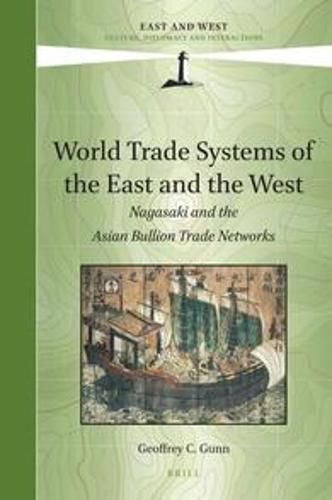Readings Newsletter
Become a Readings Member to make your shopping experience even easier.
Sign in or sign up for free!
You’re not far away from qualifying for FREE standard shipping within Australia
You’ve qualified for FREE standard shipping within Australia
The cart is loading…






In World Trade Systems of the East and West, Geoffrey C. Gunn profiles Nagasaki’s historic role in mediating the Japanese bullion trade, especially silver exchanged against Chinese and Vietnamese silk. Founded in 1571 as the terminal port of the Portuguese Macau ships, Nagasaki served as Japan’s window to the world over long time and with the East-West trade carried on by the Dutch and, with even more vigor, by the Chinese junk trade. While the final expulsion of the Portuguese in 1646 characteristically defines the closed period of early modern Japanese history, the real trade seclusion policy, this work argues, only came into place one century later when the Shogunate firmly grasped the true impact of the bullion trade upon the national economy.
$9.00 standard shipping within Australia
FREE standard shipping within Australia for orders over $100.00
Express & International shipping calculated at checkout
In World Trade Systems of the East and West, Geoffrey C. Gunn profiles Nagasaki’s historic role in mediating the Japanese bullion trade, especially silver exchanged against Chinese and Vietnamese silk. Founded in 1571 as the terminal port of the Portuguese Macau ships, Nagasaki served as Japan’s window to the world over long time and with the East-West trade carried on by the Dutch and, with even more vigor, by the Chinese junk trade. While the final expulsion of the Portuguese in 1646 characteristically defines the closed period of early modern Japanese history, the real trade seclusion policy, this work argues, only came into place one century later when the Shogunate firmly grasped the true impact of the bullion trade upon the national economy.